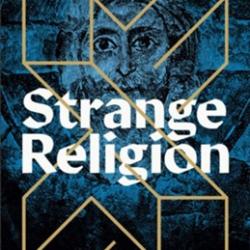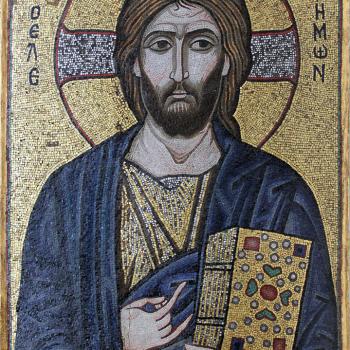Antinous was known and honored, though, well into the 6th century in his holy city of Antinoöpolis in Egypt by such writers as Dioscorus of Aphrodito, a poet and jurist who worked in Antinoöpolis. While his worship was eventually suppressed, the knowledge of him never really died out, as it is recorded in various (usually hostile) Christian writers' work. A resurgence of interest in his statuary and his literary role has occurred on an often underground basis since the 18th century. The foundation of the discipline of art history by Johann Joachim Winckelmann owes a great deal to Winckelmann's fascination with Antinous's statuary. The Uranian Poets period or movement of the late 19th and early 20th centuries, which included such figures as Oscar Wilde, John Addington Symonds, and Montague Summers (before his "conversion" to Catholicism), also featured Antinous as a subject of poetry and a metaphor for youthful male beauty quite heavily. The interest in Antinous has continued through to the present day.
The Antinous cults of antiquity even had a good deal of direct influence on Christianity; and though there is little to no evidence that the Antinous cults were as widespread or prevalent as many other ancient cults were, the Christian fathers from Justin Martyr onward (with a few exceptions) all mention it—Clement of Alexandria, Origen, Tertullian, Eusebius, Jerome, Epiphanios of Salamis, Athanasius, and several others. (Augustine does not, which is interesting, but anyway!) The problem of a human who became a god, who was syncretized to Osiris and Dionysos (sacrifice/death, wine) but also Hermes and who had a Thoth connection (the "Word"), who was to some of his followers a "savior" (particularly his cultists at Lanuvium outside of Rome, where Antinous was worshipped alongside Diana), who became a star after his death, and who caused the Nile to flood, was far more of a contender for credulity in Christian eyes than many other cults may have been.
Reading Origen's words on Antinous in Contra Celsum, where he argues against the pagan Celsus's allegations that worshipping Jesus is just as foolish as worshipping Antinous (and Antinous did have his Pagan critics besides Celsus), it all begins to look like special pleading. Origen claims Antinous wasn't a god and it is shameful to even suggest it, but Jesus definitely was, because we know (Origen claims) Jesus was from the True God, and these bits from the Hebrew Bible prove it, etc. It's the ever-present circular argument still prevalent among many modern Christians, and it was deployed in this instance against Antinous as a direct rival comparable to Jesus in the eyes of many Pagans.
Antinous's cult continues to get excoriated until the 11th century in the Byzantine world in the writings of Christians. There is even the suggestion by W. L. Dulière that many Christian apologists countered that Antinous was only deified for his beauty by then saying that Jesus was virtuous and the true son of God despite being ugly, which is a doctrine found in Tertullian, as well as in Augustine! But, of course, that idea became less attractive, as it were, after Augustine's time and the more secure foothold of Christianity was achieved on the religious scene of late antiquity.
How common is His worship by contemporary Greco-Roman Pagans? (I believe you also incorporate Egyptian practices as well?)
In terms of general practices of modern Greek, Roman, or Egyptian Paganism, his worship is almost non-existent. Many Hellenic practitioners aren't interested in him because he is "foreign" (despite being Greek) and his cultus dates from late antiquity rather than from the truly "classical" period. Though his cultus owes a gigantic debt to Egyptian custom, and there are not only deity syncretisms but fully-formed Egyptian hieroglyphic images of him that are uniquely constituted and present him as a full-fledged independent deity, very few Kemeticists have shown much interest in him to my knowledge. It is commonly believed that the ancient Romans resented Antinous's deification because Hadrian did not seek a senatus consultum for Antinous's deification, and thus he is often regarded as "foreign" to the concerns of many (though not all) Roman Reconstructionists. In fact, though, some of the most divinely portrayed statues of Antinous that survive come from private worship contexts in Italy, and the temple and society dedicated to Antinous and Diana in Lanuvium also existed, which argues against the necessity of having to consider Antinous foreign and "un-Roman."
However, people in all of these communities of Reconstructionist Paganism often have a problem with the fact that Antinous was once mortal, and that therefore his worship may not be appropriate, and may even be in some sense "sinful" or "blasphemous" to consider, despite the prevalence of hero-worship and deified mortals in Greece, Rome, and Egypt since time immemorial. There are, of course, exceptions, and there have been people in wider Paganism of the last few decades who have worshipped Antinous, whether privately or publicly. A few groups now exist that are dedicated to him, but they vary in terms of their knowledge and use of history, and their overall commitments to polytheism in general, particularly the polytheistic and syncretistic matrix that allowed Antinous's cultus to come into being in the first place and for it to succeed as widely as it did.





